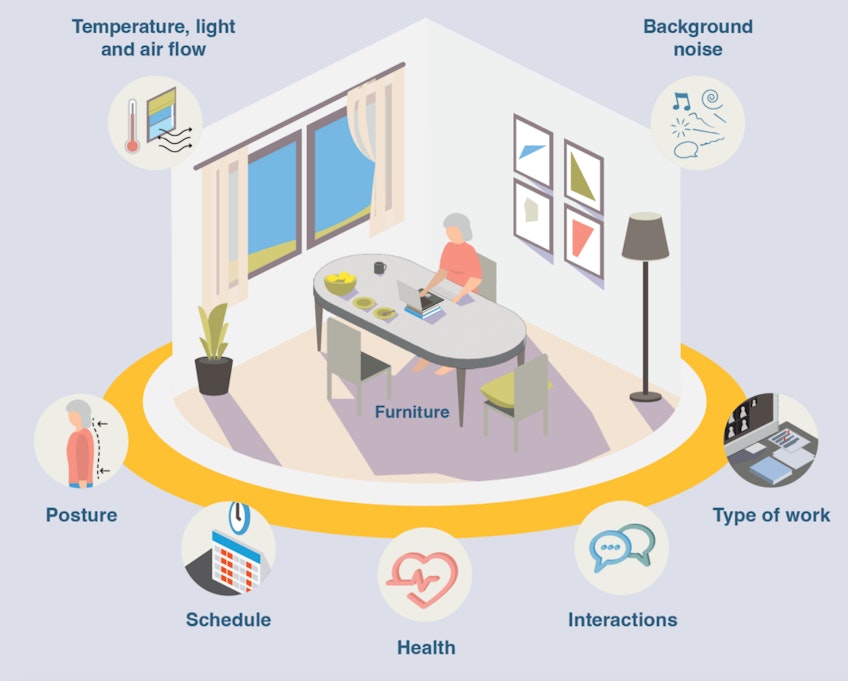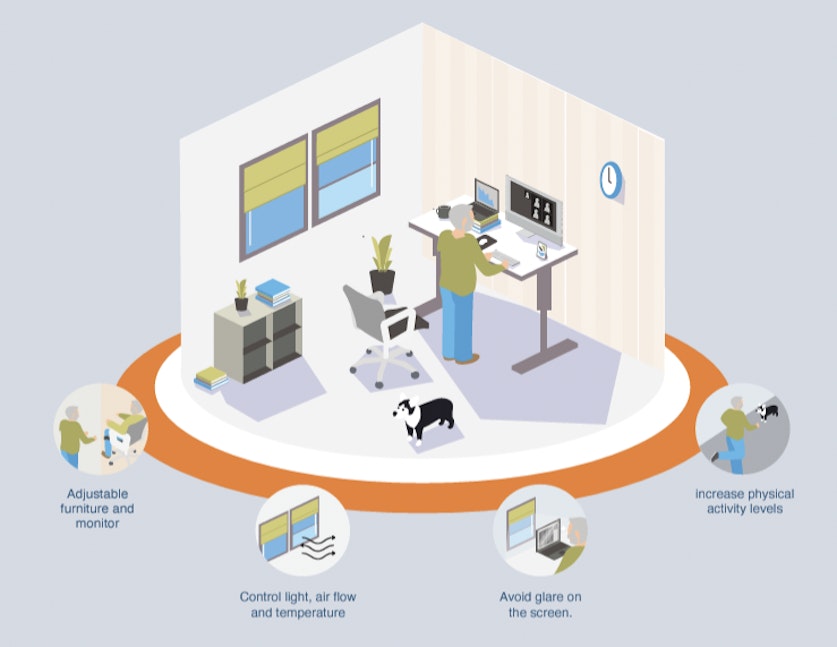Out of Office: a design guide to working well at home as we age
How can we work well from home in the hybrid era? A new research guide aims to give home workers top tips on how to stay healthy with a better home office set-up
Working from home is becoming a permanent fixture of the hybrid era. But while there is a wealth of guidance to support employee wellbeing in the office, the health of home workers has received far less attention. This is especially true for older workers who might be managing specific medical conditions.
Many companies are reluctant to specify what a home working set-up should look like, and individual home workers of all ages are often uncertain as to how to optimise their domestic surroundings for work.
Now, however, researchers in three UK universities have collaborated to set out some key principles for working well from home in a new guide on designing better workstations.
Focus on ageing challenges
The Out of Office project brings together the Design Age Institute at the Royal College of Art with researchers from Northumbria University and Loughborough University. It focuses specifically on the challenges faced by home workers as they age – older workers are more likely to seek a flexible model of working – but has wide application as an inclusive design guide.

Image: courtesy of Design Age Institute
More people than ever are working into their later years, and increasing numbers are working from home, including setting up businesses and working remotely. Too frequently, this workforce is left to set up home offices or workstations with little guidance or understanding on how to work healthily, especially in the context of managing different health conditions.
Out of Office, was inspired by workshops with users including physiotherapists and occupational health professionals. You can access the full guide here and read 20 top tips on adapting your own home office to support better health and wellbeing below.

Image: courtesy of Design Age Institute
Opportunities for working well from home
- Separate your home-life from your work-life.
- Use a dedicated room for work, preferably not shared, promoting privacy.
- Have control over room temperature, light, noise, air quality and access to fresh air.
- Situate your workstation in a bright room or close to a window. Ambient and natural light should ideally be combined to enhance legibility of screens and working materials
- Working with an uplifting view of a garden or nature can positively impact your mood.
- The work space should be comfortably warm during the winter avoiding close proximity to a radiator. During summer, windows should be easy to open to allow cooling.
- Create an environment that is a pleasure to be in. Add plants, pictures and objects that have a positive impact on your wellbeing.
- Background noise should be minimal and adjusted to personal preferences and comfort levels.
- Alarms, phone rings and other work-related sounds should be adjusted to a comfortable level.
- The floor surface should be sufficiently trip-resistant to prevent slips and falls and robust enough to withstand wear and tear from a desk chair.
- Use furniture that is adjustable if possible allowing ease of sitting and standing postures.
- Select comfortable and adjustable chairs with armrests and large, adjustable desks.
- Create sufficient storage space for your needs.
- Work related equipment and material should be within reach and cupboards or cabinets easy to open.
- Organise your workstation to make it more efficient to use. Contrasting colours and transparent cabinets can be helpful to locate the items that you need.
- Take short frequent breaks throughout the day – movement is key.
- Establish healthy habits such as eating a balanced diet.
- Take regular exercise and avoid a sedentary lifestyle.
- Participate in training to use new technologies or develop new skills.
- Raise awareness of the importance of workstation ergonomics and organisation of tasks.








